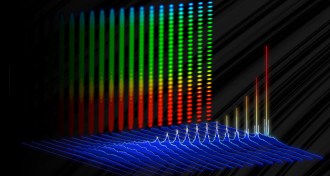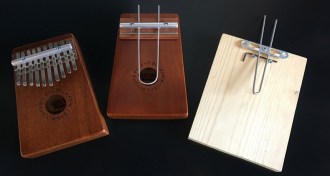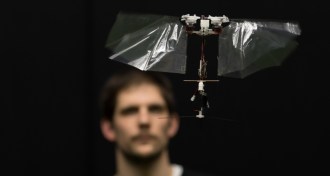Tech
Sign up for our newsletter
We summarize the week's scientific breakthroughs every Thursday.
-
 Physics
PhysicsA new ultrafast laser emits pulses of light 30 billion times a second
A new technique allows lasers to pulsate at a higher rate than ever before.
-
 Materials Science
Materials ScienceThis reflective paint could keep sunbaked buildings cool
A new type of polymer coating that reflects sunlight to control heat could supplement or replace air conditioning systems.
-
 Archaeology
ArchaeologyLaser mapping shows the surprising complexity of the Maya civilization
A large-scale lidar survey of Guatemalan forests reveals evidence of ancient, interconnected Maya cities.
By Bruce Bower -
 Tech
TechFiberglass-spinning robots could be construction workers of the future
A team of fiberglass-spinning robots could create tubing to help build bridges, buildings or other structures.
-
 Artificial Intelligence
Artificial IntelligenceAnshumali Shrivastava uses AI to wrangle torrents of data
Computer scientist Anshumali Shrivastava is designing programs that can handle torrents of information quickly and efficiently.
-
 Planetary Science
Planetary ScienceReaders contemplate water on Mars and more
Readers had questions about the significance of finding water on mars, air pollution from wildfires and spray-on sensors.
-
 Tech
TechThese new superthin antennas are made from metallic nanomaterials
Superthin antennas could bring household devices and wearable technology online.
-
 Materials Science
Materials ScienceHigh-tech ‘skins’ turn everyday objects into robots
Robotic skins turn inanimate objects into multipurpose machines.
-
 Tech
TechA sensor inspired by an African thumb piano could root out bogus medicines
An inexpensive, user-friendly device that’s based on an mbira could help identify counterfeit and contaminated medications.
-
 Tech
TechThis flying robot could reveal secrets of the aerial world of insects
A new winged robot with the exceptional agility of a fruit fly could lend insight into animal flight.
-
 Materials Science
Materials ScienceHere’s how graphene could make future electronics superfast
Graphene-based electronics that operate at terahertz frequencies would be much speedier successors to today’s silicon-based devices.
-
 Astronomy
Astronomy‘Accessory to War’ probes the uneasy alliance between space science and the military
Neil deGrasse Tyson and Avis Lang’s ‘Accessory to War’ grapples with the millennia-old partnership between space science and warfare.